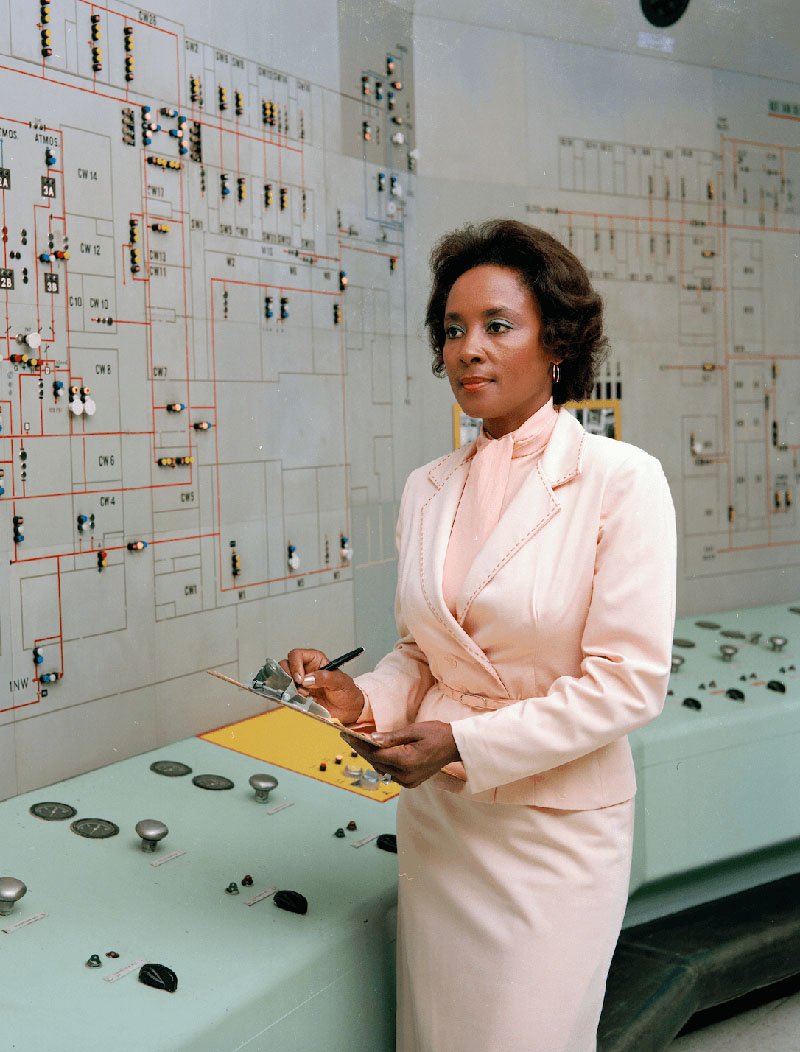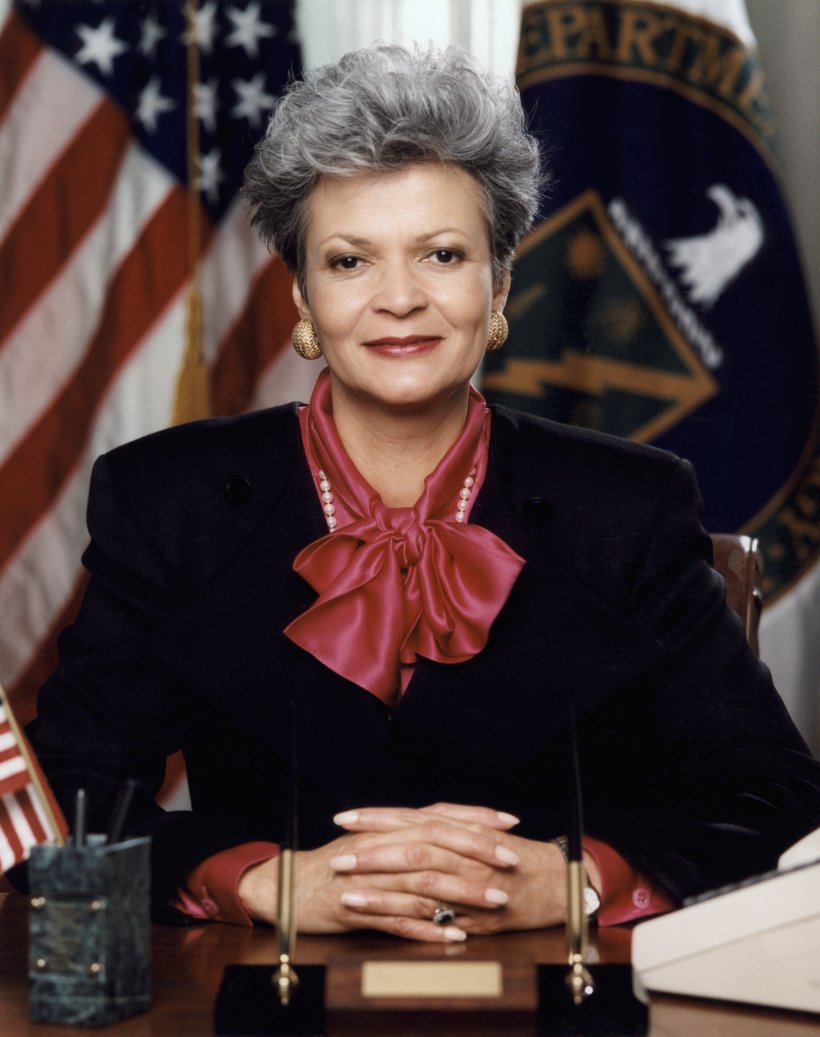Sign up for daily news updates from CleanTechnica on email. Or follow us on Google News!
This Black History Month, we honor those who have shaped our energy past, present, and future for the better.
We are beyond thankful for their groundbreaking contributions and advancements that have been foundational in the work we continue to support at the Department of Energy. Here are some of their stories:
Kétévi Assamagan

Kétévi Assamagan is an engineer and physicist at the U.S. Department of Energy’s Brookhaven National Laboratory (BNL). Born in Gabon, Assamagan earned his undergraduate degree in physics and chemistry from the University of Lomé in Togo. After a scholarship brought him to Southern Illinois University, he earned a master’s degree from Ball State University and a Ph.D. from the University of Virgina, where he studied nuclear and particle physics. Assamagan has worked as a physicist for BNL since 2001, and has played a central role as convenor of the ATLAS Higgs Working Group at the European Organization for Nuclear Research, or CERN, where he has made major contributions in the field of high energy physics. Committed to advancing and making physics education more accessible in Africa, Assamagan co-founded the African School of Fundamental Physics and Applications, which offers intensive learning programs for college students and supports physics education and research in Africa Assamagan’s impact in particle physics extends beyond his own work to the next generation of Black physicists across the African diaspora.
Annie Easley

Annie Easley was known as a “human computer” for the work she did analyzing problems and making calculations by hand at the Aircraft Engine Research Laboratory in Cleveland, Ohio. Born in 1933 in Birmingham, Alabama, Easley was confronted by racial segregation in the Jim Crow South during her early education and throughout her life. In 1955, when Easley joined the National Advisory Committee for Aeronautics, known now as the National Aeronautics and Space Administration (NASA), she was one of only four Black employees among the agency’s 2,500 employees. The Lab, known now as the NASA Glenn Research Center, was in need of people with strong math skills, and she was in need of a job after recently relocating from Birmingham. Later, as a computer programmer, Easley worked on the development of the Centaur rocket, which helped lay the groundwork for future launches of satellites, space probes and future space shuttles. Toward the end of her 34-year career, Easley also worked on a variety of energy projects, including the development of storage batteries used in electric vehicles, a project examining damage to the ozone layer, and the development of computer applications used in researching energy-conversion systems and analyzing alternative power technology.
Bill Magwood

Bill Magwood assumed his role as Director-General of the Nuclear Energy Agency (NEA) in September 2014. Prior to his role at NEA, Magwood served as one of the five commissioners appointed by President Obama to the U.S. Nuclear Regulatory Commission (NRC) from 2010–2014. While a commissioner, he advocated for the importance of nuclear regulatory independence and the necessity of maintaining strong, credible, and technically sound nuclear regulation in the United States and all countries that use nuclear power. From 2005–2010, Magwood offered independent strategic policy counsel to U.S. and international clients on energy, environment, education, and technology policy. Prior to this work, beginning in 1998, Magwood managed the U.S. Department of Energy’s Office of Nuclear Energy, where he helped revitalize the Idaho National Laboratory, created activities that reversed the decline of U.S. nuclear technology education, and played a pivotal role in initiatives like the Generation IV International Forum (GIF) and the U.S. “Nuclear Power 2010” through 2005. Prior to coming to DOE, Magwood managed electric utility research and nuclear policy programs at the Edison Electric Institute in Washington, DC, and was a scientist at Westinghouse Electric Corporation in Pittsburgh, Pennsylvania. Magwood holds bachelor’s degrees in physics and English from Carnegie Mellon University and a Master of Fine Arts from the University of Pittsburgh. He continues his phenomenal impact through his indelible mark on the global nuclear energy field as the current Director-General at NEA.
Garrett Morgan

Garrett Morgan, a successful businessman and a prolific inventor who called himself “the Black Edison,” was born in Paris, Kentucky in 1877. Morgan’s groundbreaking inventions included a breathing device known as the “safety hood,” which was a forerunner of the modern gas mask, and a traffic light that helped improve public safety. In 1923, he patented a T-shaped traffic signal with moving arms and a warning light to alert drivers that they would need to stop—which outperformed existing models at the time and improved traffic control. Morgan passed in 1963 in Cleveland, leaving an incredible mark as a pioneering inventor and advocate for social progress. Beyond his inventing career, Morgan diligently supported the African American community as a member of the newly formed National Association for the Advancement of Colored People and the Cleveland Association of Colored Men. He donated generously to Black colleges and opened an all-Black country club. Additionally, in 1920, he launched the Cleveland Call, an African American newspaper later named the Call and Post. He is remembered not only as a pioneering social activist but also as an inspiration for modern-day inventors and engineers.
Hazel O’Leary

Hazel O’Leary, former U.S. Energy Secretary, was born in 1937 in Newport News, Virginia, had a distinguished career as a lawyer, esteemed public servant and university administrator. A graduate of Fisk University in 1959, O’Leary also earned a Juris Doctorate from Rutgers Law School in 1966. O’Leary served as an Assistant Attorney General and Assistant Prosecutor in the state of New Jersey and was appointed to the Federal Energy Administration under President Gerald Ford and to the United States Department of Energy under President Jimmy Carter in 1977, where she led the Department’s Economic Regulatory Administration. In 1989, she became Executive Vice President for Environmental and Public Affairs for the Minnesota Northern States Power Company and in 1992 she was promoted to President of the holding company’s gas distribution subsidiary. In 1993, O’Leary became the first woman and African American to serve as the U.S. Secretary of Energy during the Clinton Administration. During her four-year tenure as Energy Secretary, O’Leary initiated an aggressive clean-up program, created an Openness Advisory Panel, encouraged the Clinton administration to end nuclear testing in the United States, and was a strong advocate for energy efficiency and renewable energy. Following her role as Secretary of Energy, O’Leary went on to became the 14th President of Fisk University.
By Kerri Ebanks, Digital Content Manager in the Office of Public Affairs. Courtesy of U.S. Department of Energy.
Have a tip for CleanTechnica? Want to advertise? Want to suggest a guest for our CleanTech Talk podcast? Contact us here.
Latest CleanTechnica TV Video
I don’t like paywalls. You don’t like paywalls. Who likes paywalls? Here at CleanTechnica, we implemented a limited paywall for a while, but it always felt wrong — and it was always tough to decide what we should put behind there. In theory, your most exclusive and best content goes behind a paywall. But then fewer people read it!! So, we’ve decided to completely nix paywalls here at CleanTechnica. But…
Thank you!
CleanTechnica uses affiliate links. See our policy here.




